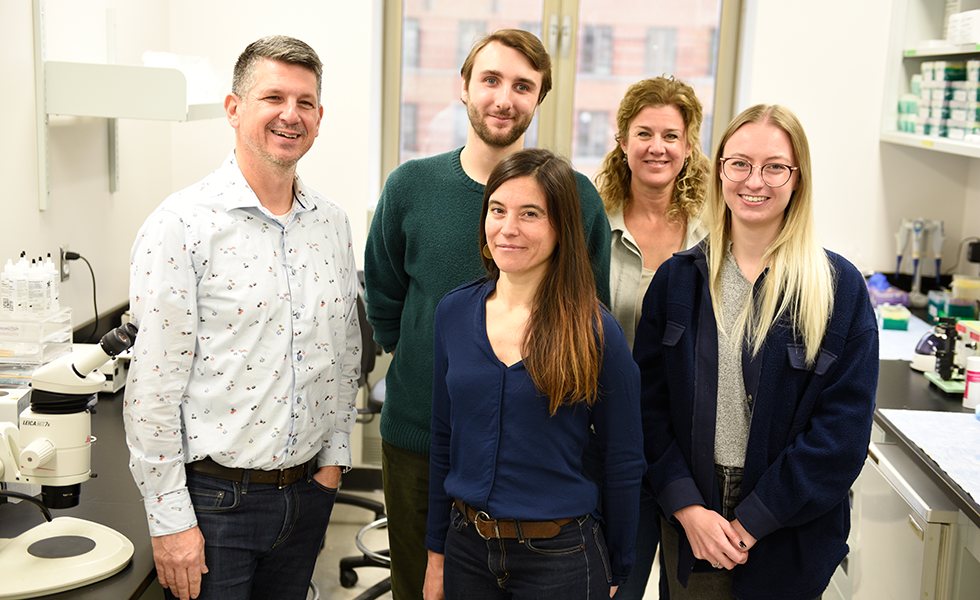
From left to right: Michel Cayouette, Thomas Brown, Marine Lacomme, Christine Jolicoeur, Sarah Hales.
A protein called ‘Numb’ acts as a regulator of intracellular Tau levels – and could someday be used to treat neurogenerative diseases, an UdeM-IRCM study finds.
A mechanism has been found that controls intracellular levels of tau, a protein that abnormally accumulates in tauopathies, a class of devastating neurodegenerative diseases.
The discovery was made in the laboratory of Dr. Michel Cayouette, director of the cellular neurobiology research unit at the Montreal Clinical Research Institute (IRCM) and research professor in the Department of Medicine at Université de Montréal.
Published today in Science Advances, the findings show that a protein called ‘Numb’ acts as a negative regulator of intracellular Tau levels, identifying Numb as a potential therapeutic agent for tauopathies.
Toxic to neurons
Tauopathies are a large family of neurodegenerative diseases, including but not limited to Alzheimer's disease. These diseases are characterized by elevated intracellular levels of Tau, which eventually becomes toxic to neurons and leads to their degeneration. Understanding the mechanisms by which Tau levels are regulated is therefore a very important first step to develop effective therapeutic strategies against these devastating diseases.
With other colleagues from the IRCM’s cellular neurobiology research unit, Marine Lacomme, a research associate and first author of the study, demonstrated that inactivation of Numb in retinal neurons and spinal-cord motor neurons leads to elevation of Tau levels and accelerates disease progression and neuronal loss. Numb thus acts as a negative regulator of intracellular Tau levels.
These findings led the IRCM team to wonder if, conversely, overexpression of Numb could decrease Tau levels and act beneficially to slow neuron loss.
Promising results in mice
In line with this hypothesis, the scientists observed that overexpression of a specific form of the Numb protein called Numb-72 decreased Tau levels and slowed down the death of retinal neurons in animal models of tauopathy.
The results were exciting: mice treated with Numb-72 performed better in a visual test than untreated mice, showing not only a slowing of neuron loss, but also an improvement in their function.
Although more work is needed to translate this discovery to clinical applications, including testing its potential to slow degeneration of human neurons, the scientists hope that Numb-72 may eventually become a therapeutic factor for the treatment of tauopathies.
This work was made possible by funding from the Alzheimer Society of Canada, the Canadian Institutes of Health Research, and the IRCM Foundation.




